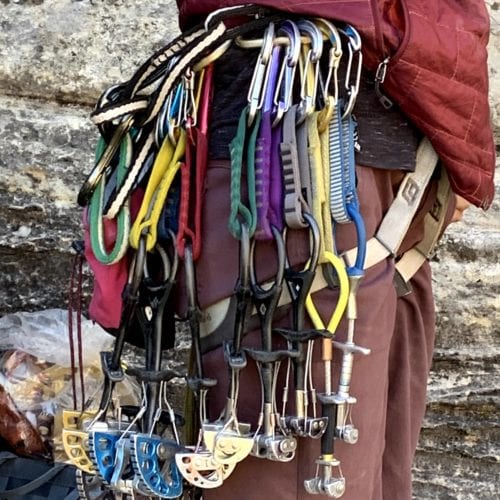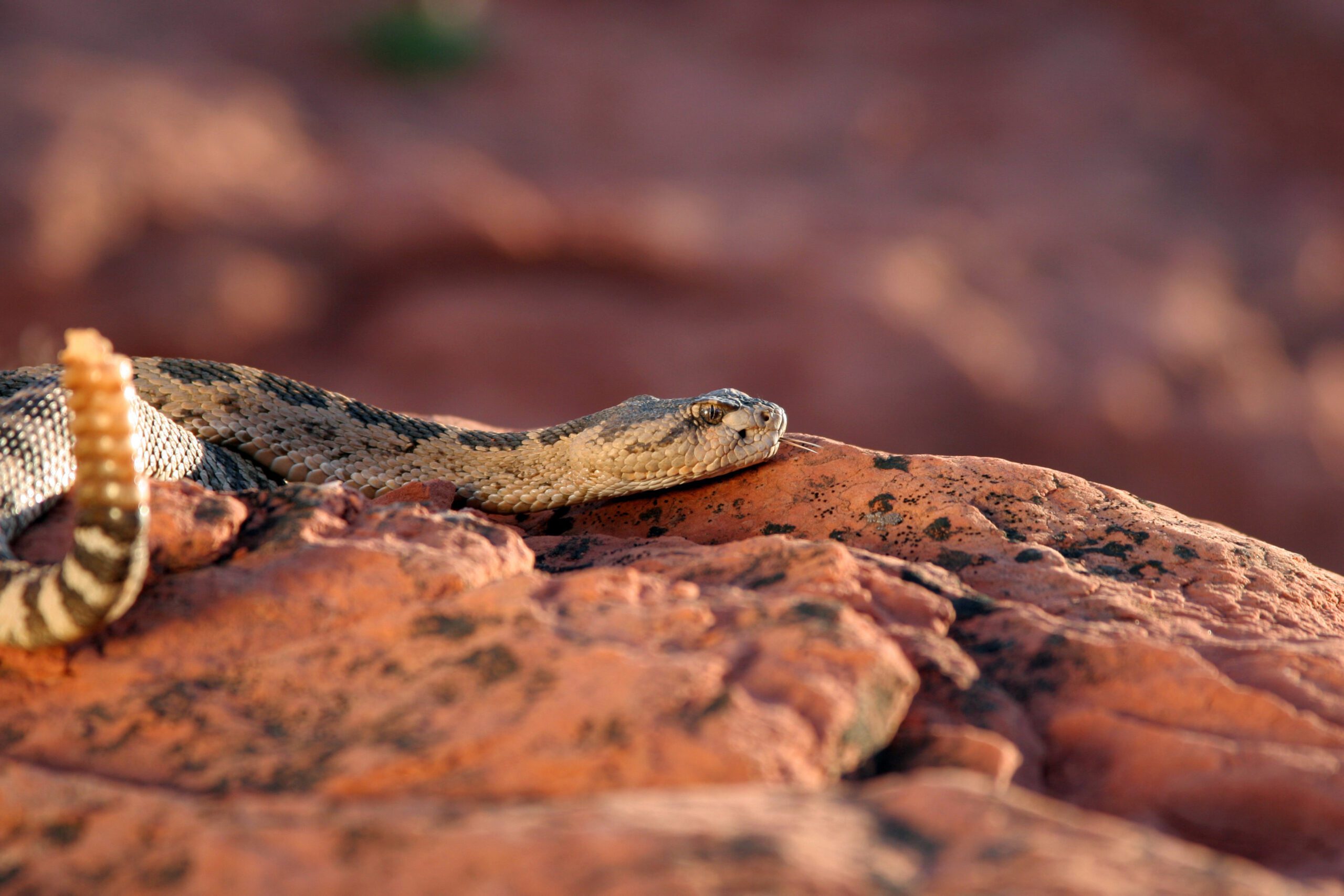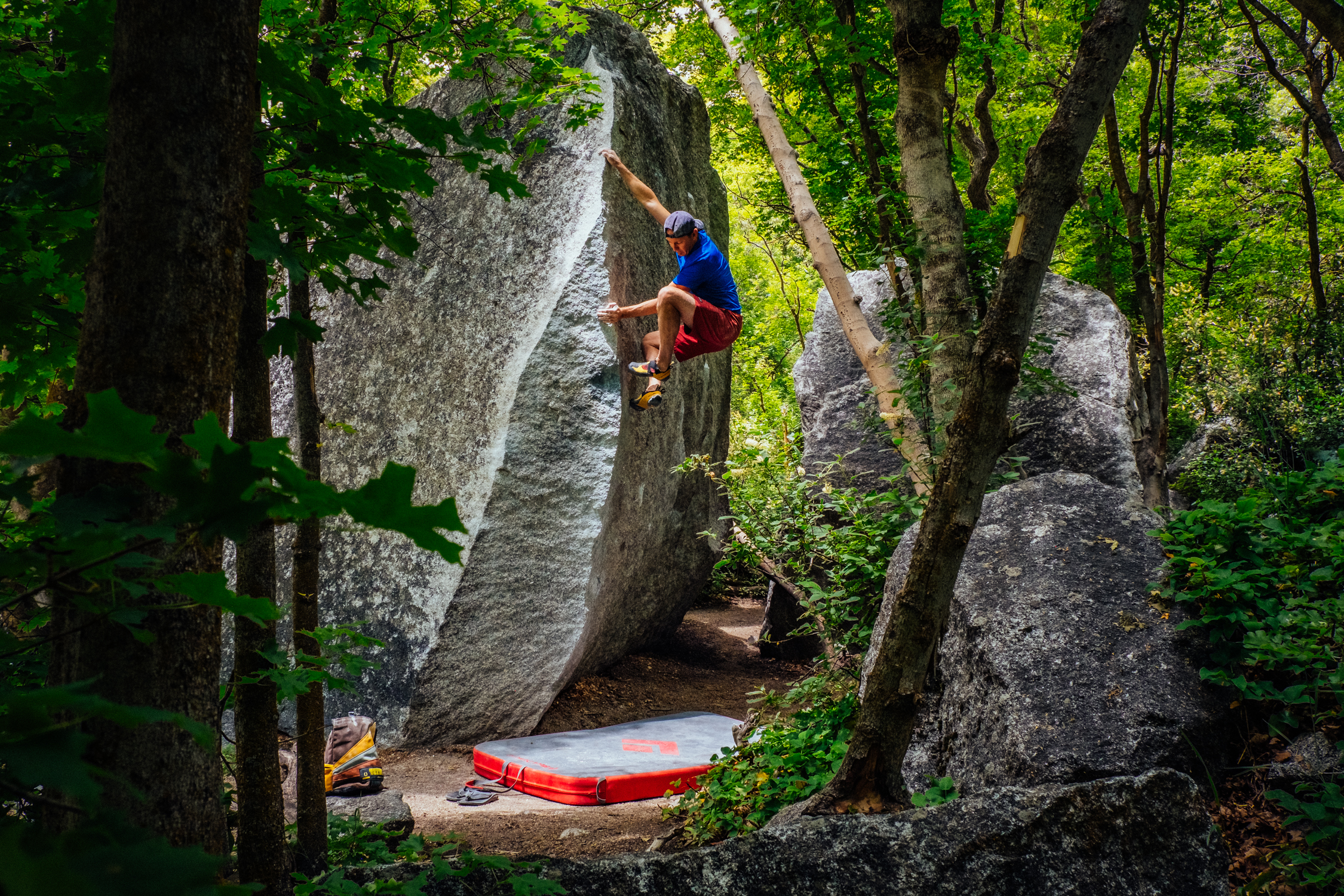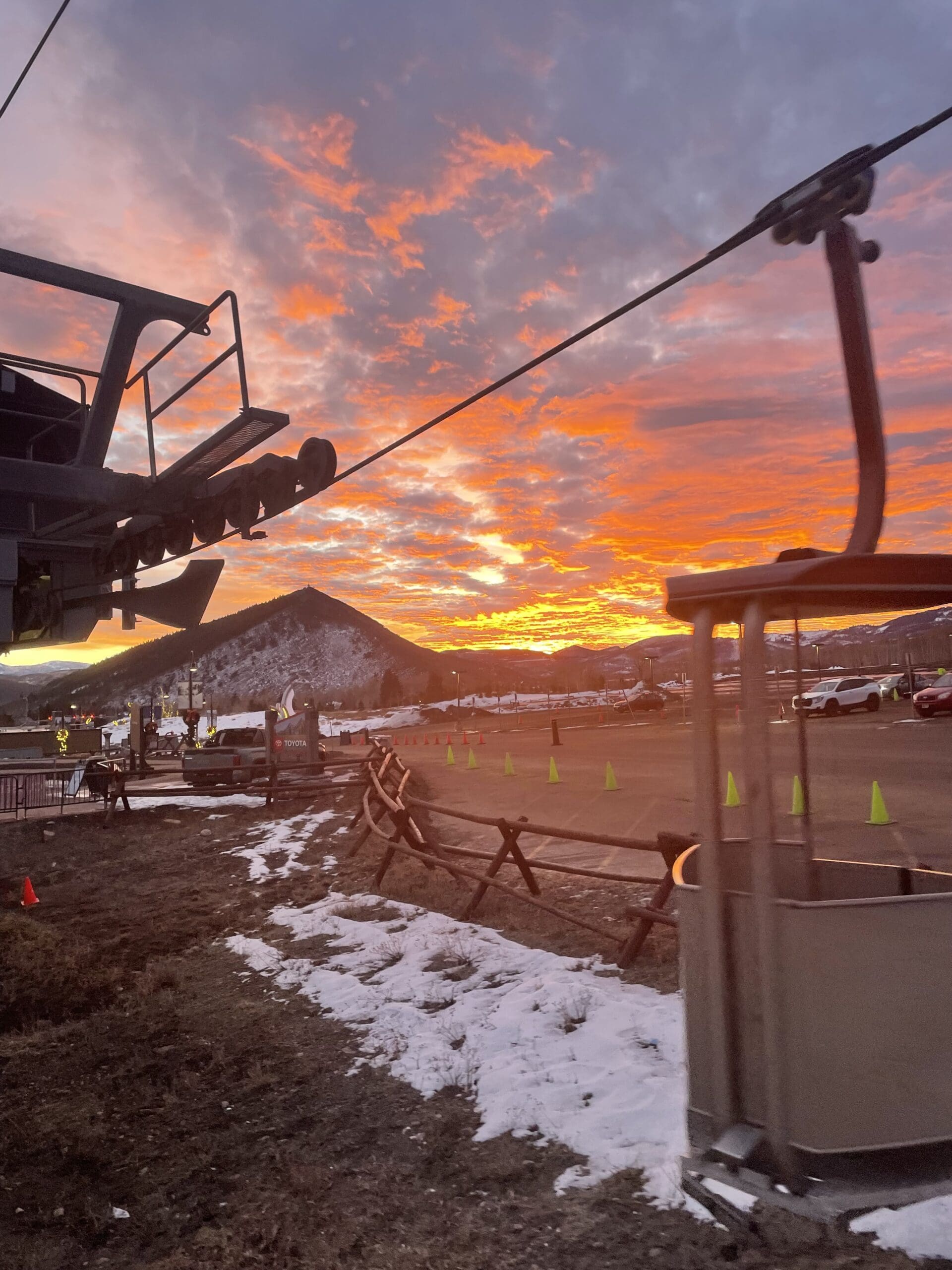Business
Self-assurance realized in a female rock-climbing clinic
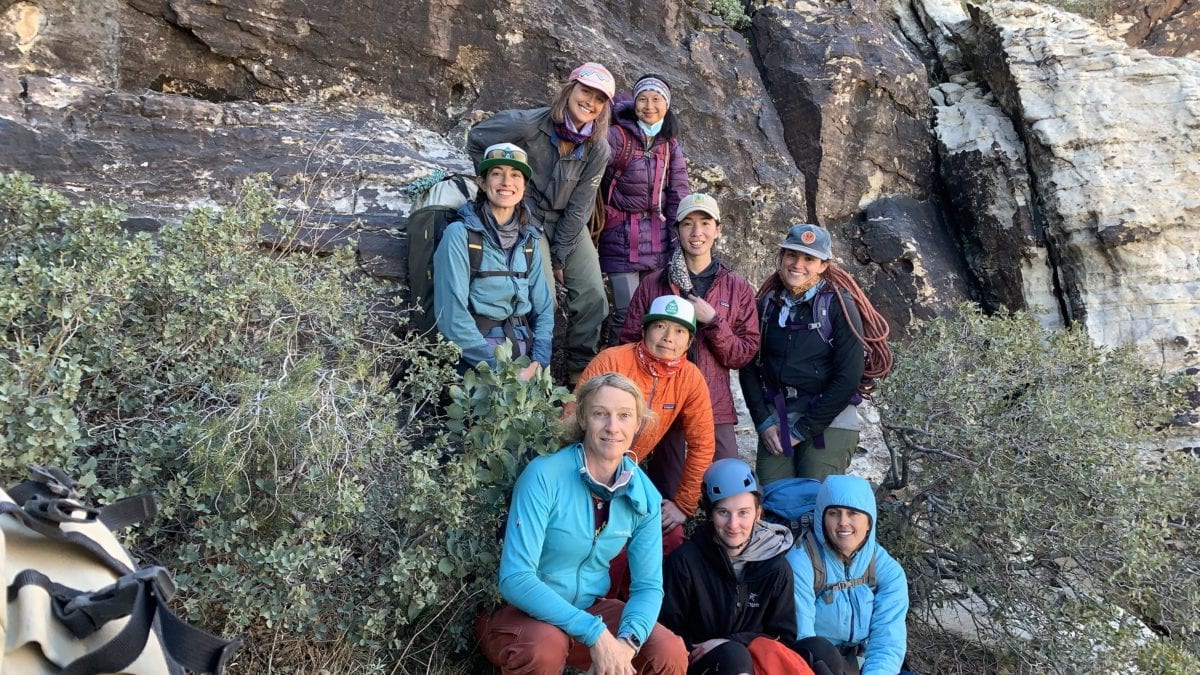
Momentarily mask-free - just for the photo! - during the trad climbing clinic Photo: Brie Chartier
RED ROCK, Nevada. — On an icy day in February, I learned about a Women’s Trad Climbing Clinic hosted by The Mountain Guides in Red Rock, Nevada. From the frozen peaks of the Wasatch, I began counting the days until the end of March and my reunion with desert sandstone.
I’m not a novice climber. When I signed up for the Women’s Trad Climbing Clinic, it wasn’t to learn fundamentals; it was to climb with women and get a confidence boost. (Trad climbing, short for traditional climbing, is an ode to climbing pioneers, who climbed without today’s advanced gear.)
Despite holding a lapsed SPI (Single Pitch Instructor) certification from the American Mountain Guides Association, I’d found myself in several discouraging climbing experiences over the years. Unsuccessful navigation attempts had scarred my confidence as a climber.
The Women’s Trad Clinic turned out to be the needed medicine to find self-assurance and more.
Szu-Ting Li (nickname Ting Ting), Miranda Oakley, and Brie Chartier instructed our group of seven over the two-day clinic. When we met Saturday morning, we were quiet, and introductions were without pompousness.
We began by sitting calmly around a massive sandstone boulder below the crag (the base of the cliff where people climb); 10 women oozing politeness. There wasn’t the feel of ‘measuring each other up;’ it was more about how to communicate with kindness and respect for our diverse group.
Students included a NASA engineer, a lawyer, an accountant, a nurse, a neuroscientist, a non-profit employee, and a journalist. Our experiences varied as much as our occupations, from beginning trad climber to trad leaders.
Instructors delivered information in a way that was approachable to our varied skills and preferred types of learning.
After reviewing proper cam and nut placement, my confidence began to swell. I know this stuff. (Cams are spring-loaded devices placed in rock that expand to create friction and stay put. Nuts are metal pieces attached to wires; also called passive gear. Unlike cams, nuts do not actively press into the rock for protection.)
We practiced gear placement, and when it came time to give feedback, there was tenderness. When we had an opportunity to mock-lead (when a climber ascends a route on top rope and places gear as if they were leading) on the first day, we were still reserved. But compassion built a safety net for learning. By the time we walked down to the parking lot, we were giggling and discussing our lives. The shyness dissipated, in its place a buzz of excitement.
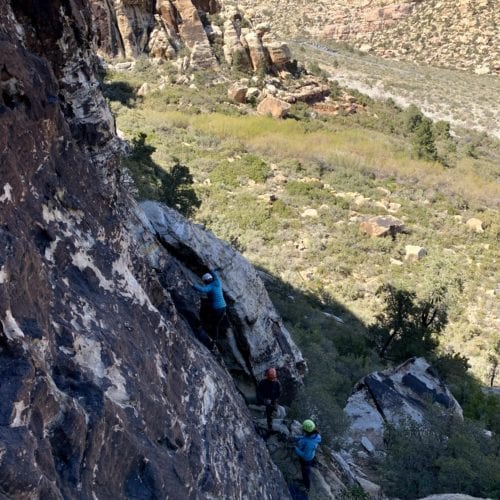
On our second day, we met in Red Rock to climb at one of my favorite areas, Willow Springs. Guides and students alike were open, smiling, guard down. We dove into more complex ideas, and Ting Ting the comedian and educator had us laughing and engaged while she demonstrated advanced techniques like anchor building and belaying from the top.
After we built anchors and mock-led a few pitches, we were ready to lead a trad pitch. I’d climbed in the area before and was eager to get on the sharp end (climbing jargon for leading a pitch).
As I roped up to climb Lucky Charms, I’d never felt so supported. Miranda was on the ground, first observing my belayer, then watching me. Brie was above capturing images, it felt like a photoshoot. Ascending the climb, the 5.7 grade was well within my comfort range, and movement felt free and easy.
(A note to the climbing-curious: beginning climbing feels like a first yoga class; the movement style requires learning a whole new language. Many climbers experience an organic evolution from gym climbing to outside.)
In the gym, climbers utilize top rope or lead climb methods.
- Top roping is when the rope goes from the belayer to the anchor and back down to the climber.
- Lead climbing is when you begin the climb with the rope connecting to the belayer only. Once you reach the first piece of protection (a bolt with a draw at the climbing gym), you clip the rope through the draw and continue upward.
Outside, climbers enjoy trad or sport climbing. The latter uses bolts drilled into rock; lead climbers (whoever’s going first) clips draws (devices composed of two carabiners attached by a thick piece of webbing) to the bolts for protection.
After my climb on day 2 of the clinic, I told the instructors that the real reason I signed up for the course was to gain confidence. I’d gotten lost trying to find the crag and started ascending the wrong route countless times. The experiences left me feeling shattered and incompetent.
“I’ve gotten lost finding the crag, too,” Miranda said. Instantly I was comforted. Just because I’m not a naturally dialed navigator doesn’t mean I can’t be a dialed climber. Ting Ting said that over time, navigation and “mountain-sense” increase.
At the end of the second day, I found what I was looking for: confidence and the knowledge that I can climb – and take my friends climbing – safely. The Women’s Trad Climbing clinic was a gentle, fun, and joyful approach to learning. I discovered strength surrounded by capable women, and built courage to go forward in my climbing adventures.
For information about climbing clinics, visit The Mountain Guides web site.
